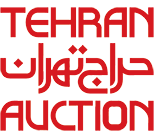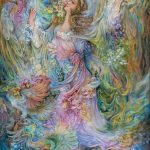Mahmoud Farshchian is, no doubt, the most eminent Persian painter in Iran. His work is admired by critics and the public alike. You can find a picture of Farshchian’s work titled The Evening of Ashura in the house of any Iranian who is devoted to the third Shiite Imam. The Farshchian Museum at the Sa’ad Abad Cultural and Historic Complex is home to outstanding works of the artist.
His colorful paintings are totally different from centuries of Persian painting tradition at first glance; however, closer inspection reveals connections to Iranian art, especially the traditional art of Isfahan, Farshchian’s home town. Robert Hillenbrand, eminent professor of Islamic Art at the University of Edinburgh, writes, “Mahmoud Farshchian is of course familiar with earlier Iranian art but he paints in his own inimitable way which could never be mistaken for any of the styles of earlier Iranian art, and he has his own message to transmit. His paintings, then primarily reflect his own highly individual view of the world, and secondly, demonstrate the everlasting capacity of Iranian art in re-creating itself, use of phenomenal methods to return to earlier forms of art, a concentration on fine details, and a combination of global and Iranian concepts.”
Line and color in the work of Farshchian vaguely echo the Persian painting of the Safavid era (17th century AD). Stuart Cary Welch, curator of Indian and Islamic art and famous scholar of Iranian studies at Sackler Museum, Harvard University, aptly says, “A look at Farshchian’s work clearly indicates that his choice of sources of Iranian art evolved over time. While his early works were reminiscent of Reza Abbasi and his school, his later works were reminders of the works of Sultan Mohammad.”
In the present work, Farshchian is following the example of Sultan Mohammad, the immortal figure of Persian painting in the Safavid era, by depicting branches, leaves, tree trunks, and rocks in the form of animals. The twists and turns, ups and downs, as well as crushed pictures and colors that are seen in Farshchian’s work, including the work on display, serve to re-create a dream world. He holds a positive, yet dreadful, view of the world. If the Devil is lurking behind a mass of clouds, magnificence of the picture will keep him away from the spectator. He sometimes ties the shawl of a good-looking girl to the snare of the Devil, while turning a sharp sword into an exquisite image. Straight lines are rarely seen in Farshchian’s work, except in some architectural and tile work. Human beings and animals are all in motion, and forms are fluid, ethereal, and vague.
Transcendence is the title of the present work to which Farshchian is making a reference, using the poetry of Rumi, to indicate the sublimity of mankind above and beyond minerals, plants, and animals. Mankind will surpass the earthly world when the body and soul transcend. Mankind is God’s creation, and his spirit shall return to Him.





